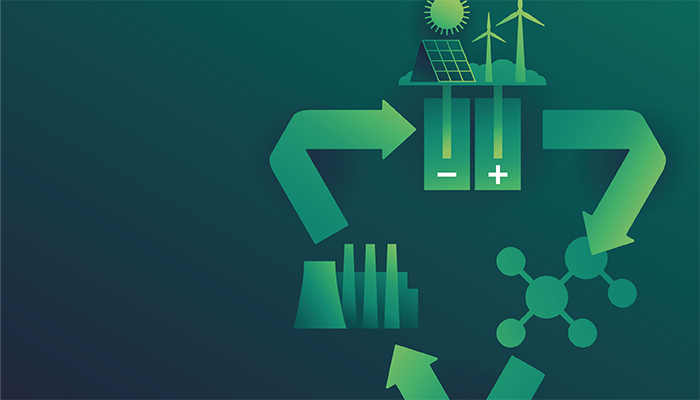
Credit: Adobe Stock (Edited)
A newly developed electrocatalyst has significantly improved the efficiency of converting carbon dioxide (CO₂) into methanol, offering a scalable approach to recycling industrial emissions into renewable fuel. The method, developed by researchers at Yale University and published in Nature Nanotechnology, integrates a dual-site catalyst system that overcomes previous efficiency limitations.
Methanol production from CO₂ is a two-step process: first, CO₂ is reduced to carbon monoxide (CO), and then CO undergoes further reduction to form methanol. However, single-site catalysts often struggle with efficiency mismatches between these steps. “Having just one type of catalytic site was not optimal for both steps in the reaction,” said lead author Jing Li, a postdoctoral associate at Yale, in a press release. To address this, the researchers designed a “two-in-one” catalyst that facilitates the reaction through a molecular-scale "spillover" mechanism, where CO migrates from one catalytic site to another for optimized conversion.
The researchers employed in situ sum-frequency generation vibrational spectroscopy (SFG-VS) to track CO spillover between catalytic sites in real time. This surface-sensitive technique allowed them to observe molecular interactions at the interface of the nickel tetramethoxyphthalocyanine (NiPc-OCH₃) and cobalt tetraaminophthalocyanine (CoPc-NH₂) catalysts, confirming that CO formed at the nickel sites successfully migrated to the cobalt sites for methanol production. The presence of CO at each site was also analyzed using X-ray photoelectron spectroscopy (XPS), which provided detailed chemical state information about the catalyst’s surface composition.
Additionally, aberration-corrected scanning transmission electron microscopy (AC-STEM) was used to visualize the atomic-scale structure of the catalyst, ensuring that the dual-site configuration was successfully integrated onto the carbon nanotube substrate. X-ray absorption spectroscopy (XAS) further confirmed the oxidation states of the catalytic metals, verifying their stability throughout the reaction process.
These analytical techniques collectively demonstrated that the dual-site catalyst achieved a Faradaic efficiency of 50 percent for methanol production, compared to around 30 percent for previous single-site designs. The system also exhibited high stability, a crucial factor for industrial scalability. “Our work offers a potentially scalable solution to reduce carbon footprints and accelerate the transition to cleaner energy,” said co-author Conor Rooney, a former PhD student in the lab.




